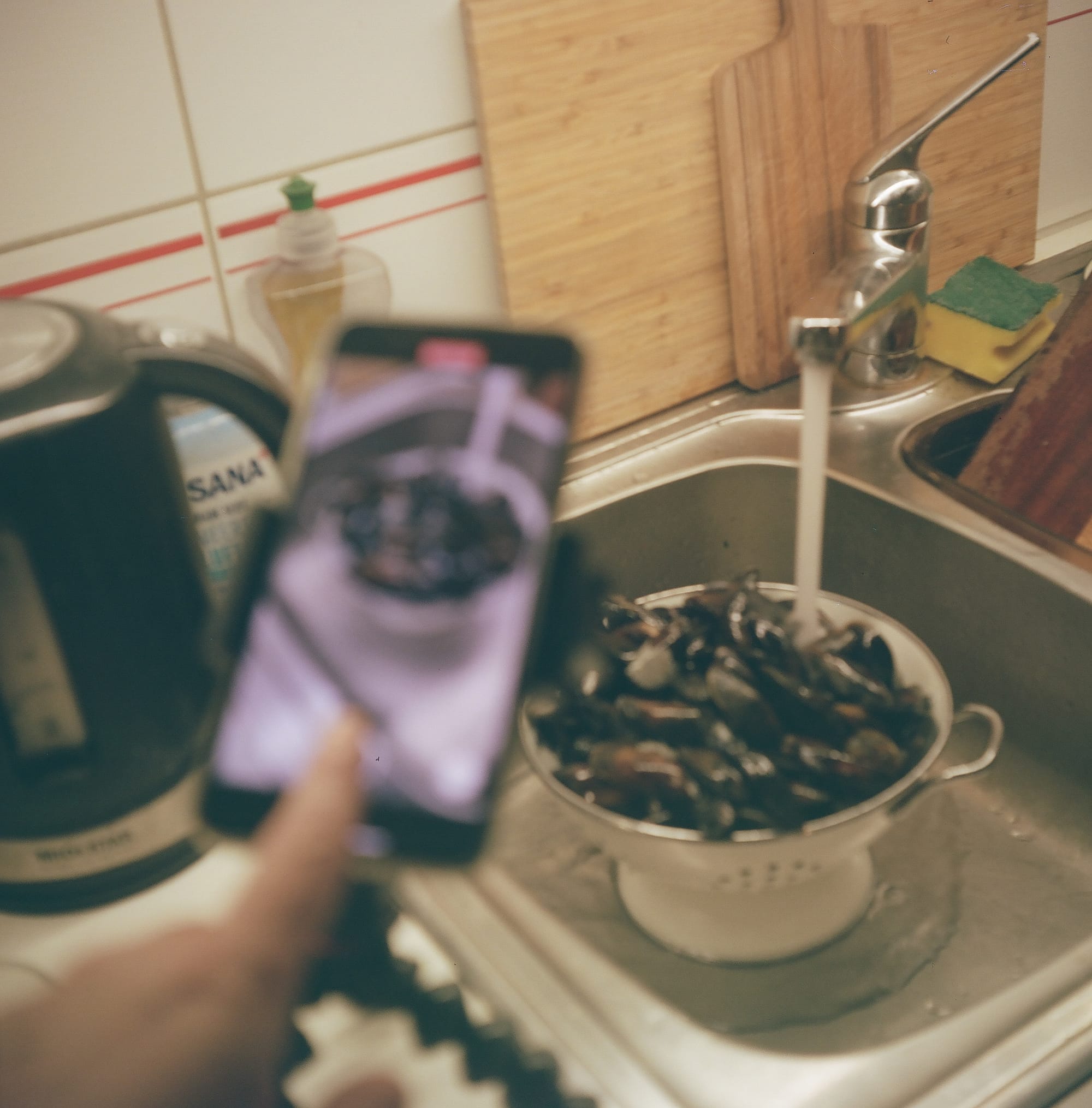What to eat BELGIUM 🇧🇪 Moules
Belgians eat somewhere between 25-30 tons of moules frites annually as a nation... The moules and frites are served separate because the fries would get soggy in the sauce... Throw a dollop of mayonnaise on the frites and it is Belgian perfection.

Moules
Published January 12, 2024 · by Amanda Rivkin
Belgians eat somewhere between 25-30 tons of moules frites annually as a nation. While both are ubiquitous, most of the mussels you find in Belgians’ favorite dish are actually from Zeeland in the neighboring Netherlands. Internationally, moules marinière is recognized as the most common variant of this delightful but surprisingly simple dish.
According to Saveur magazine, a premier culinary publication in the U.S., a Flemish manuscript in 1781 is first to reference something that resembled frites. Usually during the winter months when no river fish was in season, locals would slice potatoes into the shape of small fish and fry them. These small fish-shaped fried potatoes were proto-frites that in time would give life to a new dawn in Belgium’s national cuisine and the advent of the current national dish, moules frites.
Belgian farmers were some of the first in Europe to really take to the potential of the potato, brought back to Europe on odysseys to the new world. As such, traditional European societies acclimated at the speed they could to the new produce on offer, which is to say, often taking their sweet, sweet time. But by the 1600s, many farmers in present day Belgian had abandoned wheat for potato farming.

To make the marinière version of moules, shallots are sauteed in butter, white wine is added, often along with a bit of carrot and celery. Together the ingredients are steamed with a bit of salt for 20-30 minutes, the lid is lifted and the fun begins of pulling the briny buggers out from the shell and slurping down what you can of the marinière sauce.
The moules and frites are served separate because the fries would get soggy in the sauce. As separate entities, the crispiness of the fries as a side apart compliments the brininess of the mussels in excellent fashion. Throw a dollop of mayonnaise on the frites and it is Belgian perfection.
While moules frites is Belgium’s national dish, the traditional variations can be found as well in the north of France where only steak frites is more popular, replacing the sliminess of seafood only for the rich decadence of boeuf.
If you are going to indulge in this most authentic and original to the North Atlantic of traditions, know that mussels are best when in season from September to February. There is no high season for consuming frites but always remember to do so in moderation. While the potato is healthy, twice frying it and salting the hell out of it is decidedly not.
(Program note: if you are wondering why there is only a recipe for moules here sans frites, well Canada is coming up! O, Canada! Anyhow, the Canucks have poutine as their national dish. No, not the little man in the Kremlin, but rather the amazing bar food for the cold north, best served over ice hockey and with an ice-cold Molson. Canadian poutine, a dish of fries covered in cheese curds then drenched in gravy, is designed to keep you warm on the Arctic shelf in January. So give us some weeks, and we will proudly disclose info on how to make the complimenting frites, and you can skip the trimmings that make it poutine if you like! Update: that link is here!)
Recipe
See program note above as we opted to leave the frites for when we take up Canada. Ergo, check back in a few weeks-time and when that publishes, we will provide a link here. Meanwhile do subscribe!
Ingredients:
2 shallots
1-2 tablespoons of butter
Half bottle of white wine or sparkling white wine like Cremant
Sea salt
2 kilos of mussels
Fresh dill and rosemary
Dried garlic salt
Directions:
Step 1: Caramelize shallots in butter with a pinch of salt.
Step 2: Add wine and bring to low boil. Add salt to taste.
Step 3: Rinse mussels in cold water. Add to wine broth and stir with wooden spoon. Add fresh herbs on top like dill and rosemary (or whatever is more to your liking!) and cover. Stir after a few minutes and cover.
Step 4: Let sit on low to medium heat for 30 minutes until mussel shells open. Add the garlic salt at will, preferably at a moment when the mussels begin to open.
Pro-tip: if you use a transparent lid, it is easier to tell when the mussels open.
Step 5: Serve with French fries for the classic moules frites variation or bread to keep it somewhat healthier but less authentic in respect to the national dish. Discard any unopened moules as they are obviously not ready for you.
Tips, tricks and notes:
A transparent lid helps to gauge when it is time to lift the lid, so to speak, on the mussels. To avoid over-steaming, keep a close eye as they begin to open and wait no more than 5-7 minutes before stirring and serving when they do. Over-cooked mussels can taste rubbery, so something very much to avoid.
Learn where to eat Belgian food in Switzerland.
Follow our social media pages @swissglobaldining on Instagram, TikTok and YouTube